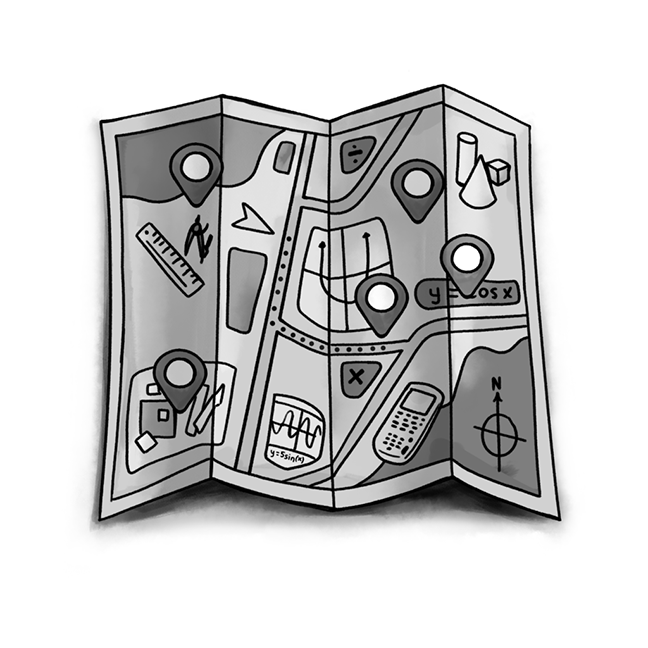Chad Westenbroek, Ontario, CA, cwestenbroek@aol.com
While completing some coursework for my Master’s degree in curriculum and instruction, with an emphasis in mathematics, I stumbled upon CPM in one of my resources. Though I do not recall what the resource highlighted, I do recall investigating CPM a little bit further by exploring its website. Interested in improving my practice, the professional learning tab grabbed my attention. I noticed the link for the Academy of Best Practices (ABP), and I read through the summary. The words “We cover the cost of travel to and from Seattle as well as the room and meals at Seattle Pacific University” jumped out at me. With the motivation for a free trip as my new top priority, I quickly filled out my application and submitted my references.
Before continuing, it might be helpful to know a little bit about my background. I grew up attending a small Christian school, attended a small Christian college, and now teach at a small Christian school. I hesitate to call it a bubble, but to say the least, I had very limited experiences outside of my Christian community. Filling out the application, I wondered if CPM would even consider a teacher like myself, who could only influence such a small community of learners. Needless to say, I got the news that I had been selected to attend ABP. Unfortunately, the dates of ABP overlapped with my family vacation. Ultimately, my decision to attend became my decision to change my world.
My flight arrived much later than the rest of the group, as I had flown right from small town Minnesota, where my family had been vacationing. Fortunately, email communications allowed me to connect with another ABP participant at the airport and we made our way to Seattle Pacific University together. This connection sparked the beginning of many connections to come.
I woke up the next morning, greeted by my two apartment-mates, who had fallen asleep before I arrived. We made our way to breakfast together and then to the classroom. Once I was comfortable with the three people that I had met, I had planned on sitting with them in class. However, the ABP coordinators had better plans for me. As I walked in the classroom, I had to grab a card and find a table with a description that matched the image on my card. My card had an image of somebody who I did not recognize, but I used a process of elimination to put myself at the “royalty” table. It was here that I made connections with three new teachers. After lunch, it became clear to me that I would get to know every person in the group, as the ABP leadership team modeled another grouping strategy for us.
The greatest opportunity to get to know fellow ABP participants took place outside of the classroom. It would have delighted me to attend each of the after-hours adventures, but unfortunately I had other work to get done for my master’s program. Some nights, however, I put aside my master’s degree homework and attended social outings, such as kayaking along Lake Union with a beautiful skyline view or attending a Mariners game. Building these relationships helped me to see my colleagues as friends, which will make following up throughout the year a less intimidating task.
The entire week blew me away with more and more strategies that I can use in my classroom. Building effective teams of students, engaging students in productive struggle, utilizing algebra tiles, and implementing meaningful tasks stood out among the practices. However, the topic that I thought would have the least application to my own setting ended up changing my thinking the most: social justice and equity.
Our presenters, Nora Ramirez and Linda Fillmore, painted a picture for us of the inequities in the wealth gap. Coming from a conservative background, I heard the presentation with the mindset that those in the top 10% of our nation’s dispersal of wealth have earned their way there and that those at the bottom deserve to be there because of the choices that they have made. When watching the presentation, I began to think about my own perspectives. What once seemed fair to me now seemed unfair. I wondered how my students might respond to the same presentation, what discussions might arise, and about the value of incorporating social justice into the math classroom. Without pushing an agenda, the speakers caused me to challenge my own thinking. I want that same experience for my students.
We concluded the week in a whole-group circle, sharing our highlights and biggest takeaways from the week. To my surprise, my fellow ABP participants shared the same feelings that I did. Though mathematics stood as the focus for the week, many of us saw the relationships we established as more meaningful. Without the relationships that we built, our learning throughout the week would have meant nothing. We need relationships to share ideas, to challenge the thinking of others, and to hold one another accountable. Now we can change the world by developing this thinking in our students. Thank you to CPM for providing this wonderful opportunity. I now feel equipped to change the world.
